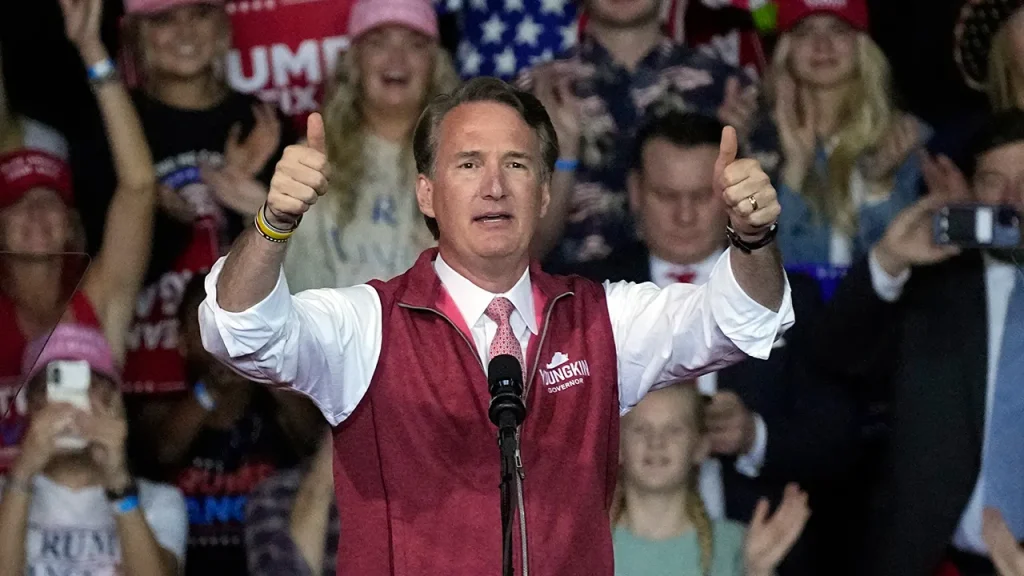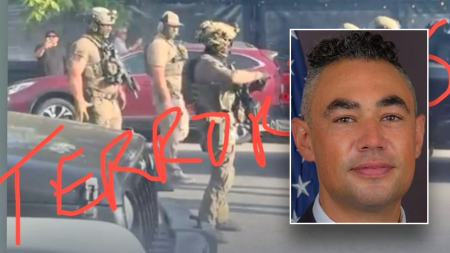Governor Glenn Youngkin of Virginia is poised to introduce a budget proposal aimed at dismantling “sanctuary cities” within the state. This initiative represents a significant shift in Virginia’s approach to immigration enforcement, with Youngkin emphasizing the imperative of upholding the rule of law and prioritizing public safety. The proposal’s core tenets revolve around compelling local law enforcement agencies to fully cooperate with Immigration and Customs Enforcement (ICE) detainer requests for criminal illegal immigrants. This cooperation would mandate the notification of federal authorities within 48 hours of the release of any such individual who has passed through the justice system. Furthermore, the proposal seeks to financially penalize localities that adopt sanctuary city policies by withholding state funding earmarked for their police departments. This funding mechanism, known as “599 Funding,” would be controlled by the Department of Criminal Justice Services, under the leadership of Youngkin appointee Jackson Miller, a former Prince William County Officer.
Youngkin’s justification for this assertive stance rests on the premise that sanctuary city policies embolden criminal activity by shielding illegal immigrants from federal immigration authorities. He argues that this creates a cycle of violence and crime, undermining public safety and necessitating state intervention. By enforcing compliance with ICE detainers and denying funding to non-compliant localities, Youngkin intends to send a clear message that Virginia will not tolerate jurisdictions that obstruct federal immigration enforcement efforts. He frames this as a necessary measure to protect Virginians from criminal elements within the illegal immigrant population, emphasizing his commitment to upholding the rule of law and ensuring the safety and security of all residents.
The timing of this proposal follows a series of high-profile crimes committed by illegal immigrants in Virginia, particularly a sexual assault case involving a Honduran national in Herndon. This incident fueled public outcry and intensified scrutiny of Fairfax County’s existing sanctuary-type policies, which critics argue contributed to the perpetrator’s ability to remain at large. The case highlights the potential consequences of policies that limit cooperation with ICE and underscores the need, in Youngkin’s view, for a statewide approach that prioritizes collaboration between local and federal law enforcement agencies. Youngkin is using this case as a prime example to justify his proposed policy changes, emphasizing the potential dangers posed by individuals with criminal records who are in the country illegally.
The proposed budget provision is poised to generate significant controversy and legal challenges. Several localities, including Fairfax County, Arlington County, Alexandria, and Richmond, have implemented policies that restrict cooperation with ICE, reflecting a divergence of opinion on the balance between local autonomy and federal immigration enforcement. These policies vary in their specifics, ranging from requiring judicial warrants for detainers to limiting notification of ICE to cases involving serious crimes. The clash between state and local authorities on this issue is likely to intensify as the budget proposal moves forward, with legal battles potentially shaping the future of immigration enforcement in Virginia. Civil liberties groups and immigrant advocacy organizations are likely to challenge the constitutionality of the proposed measures, arguing that they infringe on the rights of immigrants and violate established legal precedents.
The broader context of the debate surrounding sanctuary cities involves the tension between federal immigration laws and local law enforcement priorities. Proponents of sanctuary policies argue that they foster trust between immigrant communities and law enforcement, encouraging cooperation in reporting crimes and promoting public safety. They also raise concerns about the potential for racial profiling and the erosion of due process rights when local police are tasked with enforcing federal immigration laws. Conversely, opponents of sanctuary cities contend that these policies obstruct federal enforcement efforts, create havens for criminals, and undermine the rule of law. This multifaceted debate raises complex legal and ethical questions, with the potential for significant ramifications for immigrant communities and the broader public.
Governor Youngkin’s proposal reflects a national trend of state-level efforts to address immigration enforcement in the absence of comprehensive federal reform. It underscores the deep divisions that exist on this issue and the challenges of balancing competing interests. The outcome of this legislative battle in Virginia will have significant implications for the future of sanctuary city policies nationwide and may serve as a bellwether for similar efforts in other states. The legal challenges that are likely to arise will shape the legal landscape surrounding immigration enforcement and potentially influence the development of federal immigration policy in the years to come. Ultimately, the debate over sanctuary cities highlights the ongoing struggle to define the appropriate role of local and state governments in addressing immigration, a complex issue with far-reaching consequences for communities across the United States.










